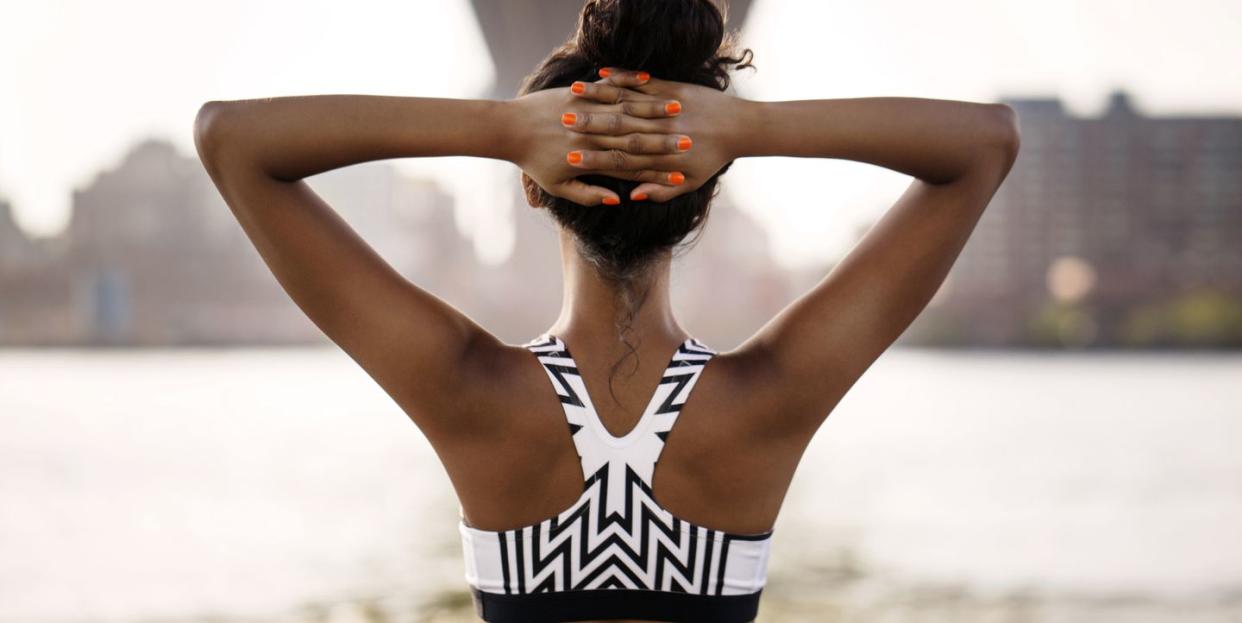BPA Found Not Only In Sports Bras, but Also Other Athletic Wear, According to Watchdog Group

The Center for Environmental Health found that sports bras sold by many major athletic brands contained BPAs well over the safe limit.
While the research doesn’t say exactly how much you absorb from clothing, staying in sweaty gear for hours could increase your risk of exposure.
Although Bisphenol A (BPA) has been used in the production of some plastics since the 1950s, over the last few years research has indicated that BPA can seep into food and beverages from containers made with the chemical. This information has led to an effort to remove BPA from the manufacturing process for items such as reusable water bottles and products for babies and children.
Now, watchdog group Center for Environmental Health (CEH) reports that it isn’t only food and beverage containers that are a concern—some athletic wear could also cause exposure risk.
Originally, CEH tested children’s socks for the presence of BPAs, and found they were sometimes present, particularly in products made with polyester, spandex, or both, explains Jimena Díaz Leiva, Ph.D., science director at CEH. This research, conducted in 2019, led to notices sent to more than 100 sock manufacturers, Leiva told Runner’s World, resulting in significant production changes. CEH had already been successful in efforts to push for the removal of lead from children’s toys and candies, Leiva added.
Because materials similar to those used in socks is present in athletic clothing, the group decided to expand its testing into sports bras and shirts. The group found that sports bras sold by Athleta, Victoria’s Secret, Asics, The North Face, Brooks, Nike, FILA, and All in Motion contained BPAs well over the safe limit set by California’s law, Proposition 65.
Athletic shirts from Mizuno, Athleta, New Balance, Reebok, The North Face, and Brooks showed high levels, as well. CEH sent legal notices to all of these companies, which will have 60 days to work with the organization to address manufacturing practices before a complaint is filed in California state court.
The concern over potential BPA effects center on how the compound may accumulate in tissues and organs, and also affect hormone regulation, according to 2020 research published in the International Journal of Molecular Sciences. Those researchers added that BPA may also contribute to risk of cardiovascular issues and cancer. Children, in particular, may be more affected. For example, a study published in the Journal of Allergy and Clinical Immunology, found that children with more BPA detected in their urine tended to have more asthma symptoms than those without BPA involvement.
Given the results of the tests on sports bras and shirts, Leiva said next steps from CEH will likely be to test other types of athletic wear containing polyester and spandex—a very popular combo for sportswear—such as athletic shorts, yoga leggings, and “sweat-wicking” socks.
Although the use of BPAs is widespread in the athletic wear tested, Leiva added that the use of polyester and spandex in combination didn’t automatically result in BPAs. Although she was unable to name specific brands due to ongoing legislation, she did say there were several companies that offered sports bras and shirts without BPAs, which means it’s possible for the chemical to be taken out of the process without affecting product quality.
“It’s not clear why BPAs would need to be in these clothing items, considering that they’re not in all sportswear tested,” said Leiva. “When we started testing, we had no idea it would be so widespread and now we’re wondering what else contains BPAs. Unfortunately, the effects are more nefarious than a superficial reaction like a rash. It gets into the body through the skin. And if you’re sweating, that can make absorption more likely.”
An important note: CEH tested levels of BPA, but not how much you’d absorb.
Sweat opens the pores more, though, which is why absorption might be more likely, according to Loren Wold, Ph.D., assistant dean for biological health research at The Ohio State University. His work has often centered on environmental toxins and triggers, and although he wasn’t part of the CEH testing, he says the results are concerning.
“My first reaction was that it’s ironic these companies focused on health and wellness haven’t considered the makeup of their products,” Wold said. However, “BPAs are present in so many products—even store receipts—that it’s not shocking they would be in any product that contains a form of plastic, and that includes clothing.”
The problem, Wold adds, is that it’s unknown how much would get absorbed from clothing exposure, especially over time. For example, wearing a sports bra for an hour-long ride may involve minimal exposure, but many women wear these type of bras throughout the day, which Wold said could be problematic.
“The longer you wear this clothing, the higher your exposure risk becomes, just like any environmental toxin,” Wold said. “It would be good for BPAs to be taken out of these products, but until then, it may be best to exercise caution and not wear these clothes all day.”
You Might Also Like

